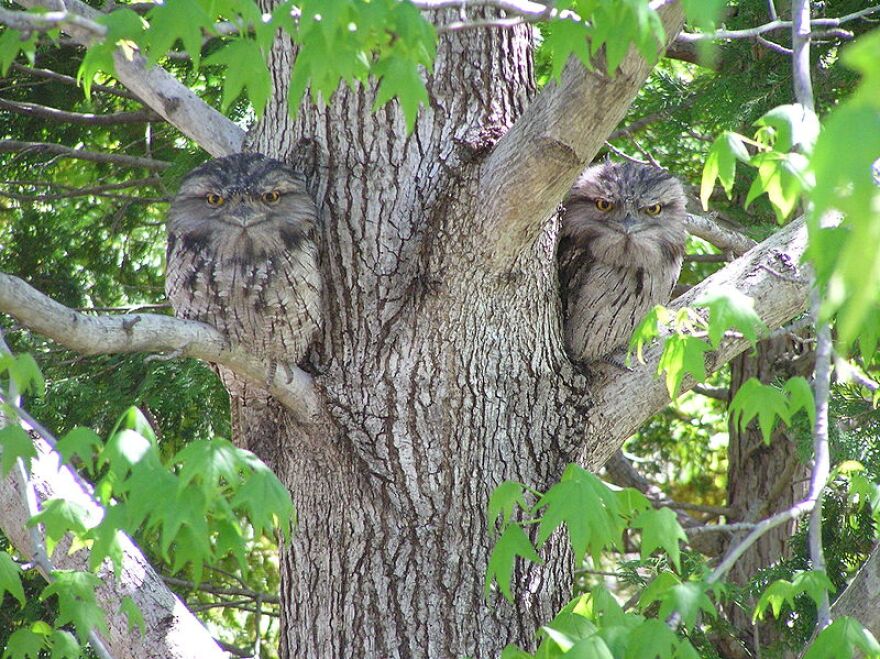Updated Nov. 27 at 10:40 a.m. to correct two photo captions.
There’s a bird to be thankful for in St. Louis, but we’re not talking about turkey.
On Nov. 2, the Saint Louis Zoo welcomed yet another adorable addition, a fluffy Tawny Frogmouth chick. Born to first-time parents, zoo keepers are taking extra precautions to ensure the chick develops properly.
Often mistaken for an owl, the Australia native also dines at night but prefers to wait for its prey to come to it. This bulky bird typically eat insects but is also known to include small rodents and—yes—frogs in its diet.

The Tawny Frogmouth (Podargus strigoides) is named for its huge wide mouth that resembles that of a frog’s when open. Their mottled gray, black, white and silver plumage functions as an effective camouflage, giving it the appearance of tree bark.
Characteristically weak flyers, the Tawny Frogmouth when threatened will squint its large amber eyes and keep very still.
The species is monogamous and both parents participate in egg incubation and chick feeding. There is little difference in appearance between male and females though males can be slightly larger. Fully grown, Tawny Frogmouths weigh about a pound and a half and grow up to 21 inches in length. They are found in Australia, Tasmania and southern New Guinea.
The Saint Louis Zoo received the chick’s parents just four months ago as part of a national breeding program. The pairing was based on a recommendation from the Association of Zoos and Aquariums' (AZA) Tawny Frogmouth Species Survival Plan (SSP). An SSP is a cooperative population management and conservation program in AZA accredited zoos and aquariums. The program aims to maintain a healthy, self-sustaining and genetically diverse population for select species.
What does it sound like? Listen to the Tawny Frogmouth call here.
Follow Sarah Skiöld-Hanlin on Twitter: @Skihan






